

Articles
How To Have A Garden On A Balcony
Modified: May 6, 2024
Discover expert articles on how to create and maintain a beautiful garden on your balcony. Get tips and advice to transform your small space into a blooming oasis.
(Many of the links in this article redirect to a specific reviewed product. Your purchase of these products through affiliate links helps to generate commission for Storables.com, at no extra cost. Learn more)
Introduction
Having a garden is a wonderful way to connect with nature and enjoy the beauty of plants and flowers. But what if you live in an apartment with limited outdoor space? Fear not! With a little creativity and planning, you can create a stunning garden right on your balcony. A balcony garden not only adds visual appeal to your living space but also provides a tranquil oasis where you can relax and unwind.
In this article, we will guide you through the process of setting up a garden on your balcony. From choosing the right plants to maximizing space with vertical gardening, we will cover all the essential aspects to help you create a thriving and vibrant balcony garden.
Before you start, it’s important to consider a few factors. Firstly, assess the amount of sunlight your balcony receives throughout the day. This will help determine the types of plants that will thrive in your space. Secondly, consider the size and layout of your balcony to determine the number and size of containers you’ll need. Lastly, think about the maintenance level you can commit to, as some plants require more care than others.
Now, let’s dive into the details of creating a beautiful and functional garden on your balcony. Whether you have a tiny balcony or a spacious terrace, these tips will help you transform your outdoor space into a lush green haven.
Key Takeaways:
- Transform your balcony into a lush oasis by choosing the right plants, containers, and maximizing vertical space. With careful maintenance, you can create a thriving garden sanctuary right outside your door.
- Embrace the beauty of nature on your balcony through strategic plant selection, proper maintenance, and creative vertical gardening techniques. Cultivate a vibrant and tranquil outdoor haven with a touch of your personal style.
Read more: How To Have Privacy On Balcony
Choosing the Right Plants
When it comes to selecting plants for your balcony garden, it’s essential to consider the specific conditions of your balcony, such as sunlight exposure, temperature, and wind. Here are a few factors to keep in mind:
1. Sunlight Requirements: Different plants have different sunlight requirements. Take note of the amount of direct sunlight your balcony receives throughout the day. If your balcony gets full sun for more than six hours, choose plants that thrive in full sun, such as marigolds, petunias, or geraniums. For balconies with partial shade, opt for impatiens, begonias, or ferns that thrive in these conditions. If your balcony is mostly shaded, consider shade-loving plants like hostas, coleus, or ferns.
2. Size and Space: Consider the size and space restrictions of your balcony. If you have limited space, choose compact plants that grow well in containers, such as herbs, lettuce, or cherry tomatoes. If you have more space, you can consider larger plants like bushier flowers, dwarf fruit trees, or climbing vines that can add vertical interest.
3. Climate Adaptability: Choose plants that are suitable for your local climate. A balcony garden is exposed to more temperature fluctuations and wind than a traditional garden. Select plants that can withstand these conditions and adapt well to the climate in your area.
4. Maintenance Level: Consider the amount of time and effort you can commit to caring for your plants. Some plants require more care and attention, such as regular watering, pruning, or fertilizing. If you have a busy schedule, opt for low-maintenance plants like succulents, cacti, or herbs that require less frequent watering and care.
5. Personal Preferences: Lastly, choose plants that you personally enjoy. Whether you prefer colorful flowers, fragrant herbs, or lush green foliage, selecting plants that bring you joy will make your balcony garden a delightful and relaxing space.
By carefully considering these factors, you can choose the right plants that will thrive in your balcony garden and create a beautiful and inviting outdoor oasis. Next, let’s explore the importance of selecting the appropriate containers for your plants.
Selecting the Containers
Choosing the right containers for your balcony garden is crucial for the overall aesthetics and success of your plants. Here are some considerations to keep in mind when selecting containers:
1. Size: The size of the containers will depend on the type and size of plants you plan to grow. Ensure that the containers are large enough to accommodate the root systems of your chosen plants. Keep in mind that deeper containers retain moisture better and provide stability for taller plants.
2. Material: Containers come in various materials, such as plastic, clay, ceramic, wood, or metal. Each material has its advantages and disadvantages. Plastic containers are lightweight, affordable, and retain moisture well. Clay and ceramic containers are more aesthetically pleasing but can be heavier and prone to cracking. Wood containers are great for vertical gardening and have good drainage properties. Consider factors like durability, weight, and water retention when choosing the material.
3. Drainage: Proper drainage is crucial to prevent waterlogged soil and root rot. Look for containers that have drainage holes at the bottom or can be easily drilled for drainage. Additionally, consider using saucers or trays to collect excess water and prevent water damage to your balcony.
4. Style: Choose containers that complement the overall style and theme of your balcony garden. You can opt for a cohesive look by selecting containers in similar colors or materials. Alternatively, mix and match different container styles and sizes to create visual interest and variety.
5. Hanging Baskets and Window Boxes: If you have limited floor space, consider utilizing vertical space with hanging baskets or window boxes. These can be mounted on walls or railings, allowing you to grow a wide variety of plants without occupying valuable floor space.
6. Self-Watering Containers: If you’re concerned about watering your plants regularly, self-watering containers are a convenient option. These containers have a reservoir that holds water, allowing the plants to draw moisture as needed. This can help maintain consistent moisture levels and reduce the frequency of watering.
By considering these factors and selecting the appropriate containers, you can provide a suitable environment for your balcony garden and create a visually appealing display. Next, let’s explore the steps to prepare your balcony before setting up your garden.
Preparing the Balcony
Before you start setting up your balcony garden, it’s important to prepare the space to ensure optimal growing conditions for your plants. Here are some steps to prepare your balcony:
1. Clean and Clear: Begin by thoroughly cleaning your balcony, removing any debris, dust, or dirt. Sweep the floor, wipe down the railings, and clear out any clutter that may hinder the growth of your plants. This step will create a clean and inviting space for your garden.
2. Assess Weight Capacity: Check the weight capacity of your balcony to ensure that it can support the added weight of containers, soil, and plants. Consult your building management or a structural engineer if you have any concerns. It’s essential to prioritize safety and avoid overloading your balcony.
3. Protect the Floor: Place a protective barrier on the floor to prevent any water damage or staining. You can use rubber mats, plastic trays, or waterproof liners underneath your containers to catch any excess water and prevent it from seeping through the balcony floor.
4. Consider Wind Exposure: If your balcony is exposed to strong winds, consider installing windbreakers, such as privacy screens or trellises covered with plant vines, to provide protection for your plants. Wind can dry out the soil and damage delicate plants, so it’s important to create a shield against strong gusts.
5. Add Privacy: Depending on your preference, you may want to add privacy to your balcony garden. Consider installing curtains, shades, or outdoor blinds to create a cozy and secluded space. This will not only provide privacy but also protect your plants from excessive sun exposure.
6. Consider Pests: Assess the potential for pests and take preventive measures. Install wire mesh or netting to deter birds and squirrels from damaging your plants. Use organic pest control methods or consider companion planting to naturally repel insects and pests.
By taking these steps to prepare your balcony, you will create an optimal environment for your plants to thrive. In the next sections, we will explore important aspects such as sunlight, watering systems, soil fertilization, and maintenance to ensure the health and vibrancy of your balcony garden.
Providing Adequate Sunlight
Sunlight is essential for the growth and development of plants. When setting up a balcony garden, it’s important to provide adequate sunlight to ensure the health and vitality of your plants. Here are some tips to maximize sunlight exposure:
1. Observe the Sun’s Path: Take note of the sun’s path throughout the day. Observe which areas of your balcony receive direct sunlight and for how long. This will help you determine the best spot for sun-loving plants.
2. Choose the Right Plants: Select plants that are appropriate for the amount of sunlight your balcony receives. Full-sun plants require at least 6 hours of direct sunlight per day, while shade-loving plants thrive in areas with limited sun exposure.
3. Monitor Sunlight Duration: Keep track of the duration of sunlight on your balcony over the course of a few weeks. This will help you understand any variations in light exposure due to seasonal changes or nearby buildings that may cast shadows.
4. Rotate Plants: If your balcony has areas of varying sunlight exposure, rotate your plants periodically to ensure that they all receive sufficient light. Move them to sunnier spots as needed or use reflective surfaces to redirect light to shaded areas.
5. Consider Shade Options: In cases where your balcony receives excessive sunlight, consider providing shade for your plants during the hottest part of the day. Use umbrellas, shades, or even plant trellises to create a shaded area where your plants can retreat from intense sun rays.
6. Optimize Plant Placement: Arrange your plants strategically to maximize their exposure to sunlight. Place taller plants in the back or against walls to prevent overshadowing of smaller plants. This way, all your plants can receive the necessary amount of sunlight.
7. Be Mindful of Reflections: Mirrored surfaces or light-colored walls can reflect sunlight onto your plants and increase their overall exposure. Take advantage of these reflections by positioning reflective surfaces strategically to enhance your plants’ access to sunlight.
By providing adequate sunlight, your balcony garden will flourish and thrive. Next, let’s explore the importance of proper watering and drainage systems to maintain the health of your plants.
Read more: Gifts For Gardeners Who Have Everything
Watering and Drainage Systems
Proper watering and drainage systems are crucial for the health and growth of your balcony garden. Here are some tips to help you establish an effective watering routine and ensure adequate drainage:
1. Regular Watering: Most plants in containers require regular watering, as they are more susceptible to drying out compared to plants in the ground. Check the moisture level of the soil regularly and water your plants when the top inch feels dry.
2. Watering Techniques: Water your plants at the base, near the soil, to avoid wetting the leaves unnecessarily. Consider using a watering can with a narrow spout for better control and accuracy. Water your plants slowly to allow the water to penetrate deeply into the soil.
3. Self-Watering Systems: Invest in self-watering containers or irrigation systems that can help maintain the moisture levels of your plants consistently. These systems have reservoirs or wicking mechanisms that gradually release water to the roots as needed.
4. Drainage Holes: Ensure that your containers have adequate drainage holes at the bottom to allow excess water to escape. This prevents waterlogging and helps prevent root rot. If your containers lack drainage holes, you can easily drill them to facilitate proper drainage.
5. Saucers or Trays: Place saucers or trays underneath your containers to catch excess water that drains out. Empty the saucers regularly to avoid stagnant water, which can attract pests and promote fungal growth.
6. Soil Moisture Monitoring: Use a moisture meter or simply stick your finger into the soil to check the moisture level. This helps you avoid overwatering or underwatering your plants, striking the right balance for optimal growth.
7. Mulching: Apply a layer of organic mulch, such as bark chips or straw, on the soil surface. Mulching helps conserve moisture, prevent weed growth, and regulate soil temperature, thereby reducing the frequency of watering.
8. Consistent Watering Schedule: Establish a regular watering schedule that suits the specific needs of your plants. Stick to this schedule, but also consider adjusting it based on weather conditions and the water requirements of different plants.
By implementing proper watering techniques and ensuring adequate drainage, you can maintain the ideal moisture levels for your plants and minimize the risk of water-related issues. Next, let’s explore the importance of soil and fertilizers for your balcony garden.
Choose plants that are suitable for container gardening, such as herbs, small vegetables, and flowers. Make sure your containers have proper drainage and consider using a trellis or vertical space to maximize growing area. Regularly water and fertilize your plants to keep them healthy.
Soil and Fertilizers
The quality of soil and the use of fertilizers play a vital role in the overall health and productivity of your balcony garden. Here are some important considerations when it comes to soil and fertilizers:
1. Quality Soil: Use high-quality soil that is well-draining and nutrient-rich. Opt for a potting mix specifically formulated for container gardening, as it provides the right balance of drainage and moisture retention. Avoid using garden soil, as it may compact in containers and hinder root development.
2. Container Size: The size of the container affects the amount of available soil and nutrients for your plants. To ensure sufficient nutrients, use larger containers that can accommodate a greater volume of soil. This allows for better root growth and nutrient absorption.
3. Fertilizer Selection: Choose the appropriate fertilizer based on the specific needs of your plants. Organic options, such as compost, manure, or fish emulsion, provide slow-release nutrients and help improve soil health. Alternatively, you can use controlled-release or water-soluble fertilizers specifically formulated for container plants.
4. Application Frequency: Follow the instructions on the fertilizer package to determine the appropriate application frequency. Generally, fertilize your plants every few weeks during the active growing season. However, be cautious not to over-fertilize, as this can lead to nutrient imbalances or burn the roots.
5. Nutrient Balance: Pay attention to the nutrient requirements of specific plants. Nitrogen (N), phosphorus (P), and potassium (K) are the primary nutrients necessary for plant growth. Different plants have different needs, so choose a fertilizer with an appropriate NPK ratio to meet those requirements.
6. Supplement with Organic Matter: Incorporate organic matter into the soil, such as compost or well-aged manure, to improve soil structure and increase nutrient content. Organic matter also enhances soil moisture retention and encourages beneficial microbial activity.
7. Avoid Fertilizer Burn: Be cautious when applying fertilizers and avoid direct contact with plant leaves or stems. Fertilizer burn can occur when concentrated nutrients come into contact with plant tissue, resulting in damage or even plant death. Water plants thoroughly after fertilizing to prevent excess buildup of salts.
8. Regular Soil Amendments: Over time, nutrients may become depleted from the soil. Regularly amend your soil by adding compost or other organic matter to replenish nutrients and maintain the fertility of the soil.
By using quality soil and providing appropriate fertilizers, you can ensure that your balcony garden receives the essential nutrients needed for optimal plant growth and productivity. In the next section, we will explore the maintenance and upkeep of your balcony garden.
Maintenance and Upkeep
Maintaining your balcony garden is essential to keep it healthy and thriving. Regular upkeep ensures that your plants are receiving proper care and attention. Here are some maintenance tips to help you keep your balcony garden in top shape:
1. Watering: Stick to a consistent watering schedule, adjusting it as needed based on weather conditions. Water your plants thoroughly whenever the top inch of soil feels dry. Be mindful of overwatering, as excess water can lead to root rot or fungal diseases.
2. Pruning and Deadheading: Regularly prune your plants to remove dead or damaged foliage, encourage bushier growth, and maintain shape. Deadhead flowers by removing spent blooms to encourage continuous flowering and prevent seed development.
3. Weeding: Keep an eye out for weeds in your balcony garden, as they compete for nutrients and can crowd out your plants. Remove weeds promptly to prevent them from spreading and causing damage.
4. Pest Control: Regularly inspect your plants for pests like aphids, mealybugs, or spider mites. Introduce natural pest control methods like handpicking, neem oil, or insecticidal soaps to keep pest populations in check. Companion planting can also help deter pests.
5. Fertilizing: Follow a regular fertilization schedule to provide your plants with the necessary nutrients. Avoid over-fertilizing, as it can lead to nutrient imbalances or burn the roots. Monitor the growth and overall health of your plants to adjust the fertilization routine if needed.
6. Disease Management: Inspect your plants regularly for signs of diseases like powdery mildew or fungal infections. If detected, promptly treat affected plants using organic disease control methods or consult a local nursery for appropriate treatments.
7. Mulching and Soil Amendment: Maintain a layer of organic mulch to suppress weed growth, conserve soil moisture, and regulate soil temperature. Periodically amend the soil with compost or organic matter to replenish nutrients and support overall soil health.
8. Monitor Plant Growth: Keep an eye on the growth and development of your plants. Prune or train them as needed to encourage proper growth habits and prevent overcrowding. Monitor their overall appearance for any signs of stress, nutrient deficiencies, or pest infestations.
9. Stay Vigilant to Changes: Pay attention to any changes in weather conditions, as they can impact your balcony garden. Adjust your maintenance routine accordingly, such as increasing watering during hot and dry periods or providing additional protection during strong winds or heavy rain.
Regular maintenance and attentive care are crucial to the overall success of your balcony garden. By following these guidelines, you can keep your plants healthy, vibrant, and flourishing throughout the seasons. In the next section, we will explore strategies for dealing with pests and diseases that may affect your balcony garden.
Dealing with Pests and Diseases
Pests and diseases can be a common challenge in any garden, including a balcony garden. However, with proper preventive measures and timely action, you can effectively manage and minimize their impact. Here are some strategies for dealing with pests and diseases in your balcony garden:
1. Identify the Problem: Regularly inspect your plants for any signs of pest infestations or disease symptoms. Look for chewed leaves, discoloration, wilting, or abnormal growth. Identify the specific pest or disease affecting your plants to determine the most suitable treatment.
2. Natural Pest Control: Embrace organic and natural methods to control pests. Use insecticidal soaps, neem oil, or horticultural oils to treat common pests like aphids, mealybugs, or spider mites. Introduce beneficial insects like ladybugs or lacewings that feed on garden pests.
3. Companion Planting: Grow plants that naturally repel pests, such as marigolds, basil, or lavender, alongside your vulnerable plants. Companion planting can create a more balanced ecosystem and deter pests from damaging your plants.
4. Remove Affected Leaves or Plants: If you notice a plant or a specific part that is heavily infested or diseased, consider removing it to prevent the spread to other healthy plants. Dispose of the affected plant material properly to avoid further contamination.
5. Crop Rotation: Practice crop rotation if you have multiple containers with different plants. Moving plants to different locations each season helps disrupt pest life cycles and reduces the likelihood of recurring pest or disease problems.
6. Good Plant Hygiene: Practice proper garden hygiene by keeping your balcony clean and free from debris. Regularly remove fallen leaves, dead plant material, and any decaying matter that can harbor pests or diseases.
7. Water Management: Avoid overwatering your plants, as excessive moisture can create favorable conditions for fungal diseases. Water at the base of the plants to minimize wetting the foliage. Ensure proper drainage to prevent waterlogged soil.
8. Disease-resistant Varieties: Choose disease-resistant plant varieties whenever possible. These varieties are bred to be more tolerant and less susceptible to common diseases, reducing the likelihood of disease outbreaks in your balcony garden.
9. Organic Disease Control: In the case of fungal or bacterial diseases, use organic disease control products or treatments, such as copper sprays or baking soda solutions. Follow the instructions carefully and apply them as soon as symptoms appear.
10. Consult a Professional: If the pest or disease issue seems overwhelming or persistent despite your efforts, don’t hesitate to seek advice from a local garden center or professional horticulturist who can provide specialized guidance and recommend appropriate solutions.
By implementing these strategies, you can effectively manage pests and diseases in your balcony garden and ensure the health and vitality of your plants. In the next section, we will explore the concept of vertical gardening and how it can maximize space in your balcony garden.
Read more: How To Have An Indoor Garden
Maximizing Space with Vertical Gardening
Vertical gardening is a fantastic technique for maximizing the space in your balcony garden. By utilizing vertical surfaces, you can create a lush and vibrant garden even with limited floor space. Here are some ideas for incorporating vertical gardening into your balcony:
1. Vertical Planters and Hanging Baskets: Utilize walls, railings, or fences by installing vertical planters or hanging baskets. These containers can be mounted or suspended, allowing you to grow a variety of plants vertically. Choose cascading plants, trailing vines, or compact herbs to add beauty and functionality to your vertical displays.
2. Trellises and Arbors: Install trellises or arbors against walls or in freestanding positions. These structures provide support for climbing plants, such as jasmine, bougainvillea, or climbing roses. Not only do they add vertical interest, but they also create shade and privacy for your balcony garden.
3. Living Walls or Green Screens: Create stunning living walls by using modular systems or vertical plant panels. These systems allow you to grow an abundance of plants vertically, forming beautiful green backdrops for your balcony. Additionally, green screens made of bamboo or other natural materials can provide privacy while adding a touch of natural beauty.
4. Hanging Pots and Macrame Plant Hangers: Suspend hanging pots or use macrame plant hangers to hang plants from ceilings or overhead structures. This technique adds a touch of bohemian charm to your balcony while saving valuable floor space. Opt for trailing plants or compact flowers for an appealing hanging garden display.
5. Espalier or Pruned Fruit Trees: Espalier fruit trees or prune them into horizontal tiers to create living art on your balcony walls. This method not only maximizes space but also allows you to enjoy homegrown fruits or flowers in a compact form. Select dwarf or columnar varieties for small-scale fruit tree cultivation.
6. Vertical Herb Gardens: Create vertical herb gardens using wall-mounted planters or stacking containers. Herbs like basil, rosemary, or thyme thrive in vertical arrangements and provide a fresh supply of culinary delights right on your balcony. Not only do they save space, but they also emit delightful scents.
7. Repurposed Vertical Structures: Get creative and repurpose items like old ladders, pallets, or shoe organizers into vertical garden structures. These unique setups can add a touch of whimsy and charm while maximizing your planting options.
8. Tiered Shelving Units: Invest in tiered shelving units or plant stands to create a multi-level display for your plants. This allows you to showcase a variety of plant species, while also creating an aesthetically pleasing arrangement.
With vertical gardening, you can transform your balcony into a green oasis, effectively utilizing the available space and creating a visually stunning display. Don’t be afraid to get creative and experiment with different vertical gardening techniques to find the ones that work best for your balcony garden.
Now that you have a thorough understanding of maximizing space with vertical gardening, let’s conclude our journey and reflect on the benefits of having a garden on your balcony.
Conclusion
Creating a garden on your balcony is a wonderful way to bring nature into your living space, regardless of its size. With careful consideration of plant selection, container choice, and maintenance practices, you can cultivate a thriving and beautiful balcony garden.
By choosing the right plants that match the sunlight conditions and space limitations of your balcony, you can create a harmonious and visually appealing garden. Selecting containers that provide proper drainage and complement your balcony’s style will ensure your plants have a suitable home to grow.
Preparing your balcony by cleaning and assessing its weight capacity is essential for its long-term success. Providing adequate sunlight, through strategic positioning and the use of shade options, will promote healthy growth and vibrant blooms.
Watering and drainage systems should be carefully managed to prevent overwatering or waterlogged soil. Regular fertilization, using organic options when possible, will keep your plants nourished and productive. Attention to soil health and the use of mulch will contribute to the overall vitality of your garden.
Maintenance and upkeep are crucial for the ongoing health of your balcony garden. Regular watering, pruning, and pest control measures will keep your plants in optimal condition. Disease prevention and early intervention will help protect your garden from potential threats.
Maximizing vertical space through techniques like vertical planters, trellises, and hanging pots allows you to fully utilize the available room on your balcony. This adds depth and interest to your garden, giving you the opportunity to cultivate a wider variety of plants.
In conclusion, a balcony garden brings the beauty and serenity of nature to your doorstep. It provides a personal sanctuary where you can relax, unwind, and revel in the wonders of gardening. Whether you have a small balcony or a spacious terrace, with the right planning and care, you can create a flourishing garden that brings joy and tranquility to your life.
So, roll up your sleeves, get your hands dirty, and embark on your balcony gardening adventure. Enjoy the process of nurturing life and witnessing the beauty that blossoms right outside your window!
Excited to spruce up your balcony with greenery? Take your gardening game to the next level by diving into our comprehensive guide on effective plant selection. Not sure what thrives outdoors? Our article on "What Are Good Outdoor Plants?" provides all the necessary insights to choose plants that not only survive but flourish outside, enhancing your balcony garden's charm and biodiversity.
Frequently Asked Questions about How To Have A Garden On A Balcony
Was this page helpful?
At Storables.com, we guarantee accurate and reliable information. Our content, validated by Expert Board Contributors, is crafted following stringent Editorial Policies. We're committed to providing you with well-researched, expert-backed insights for all your informational needs.
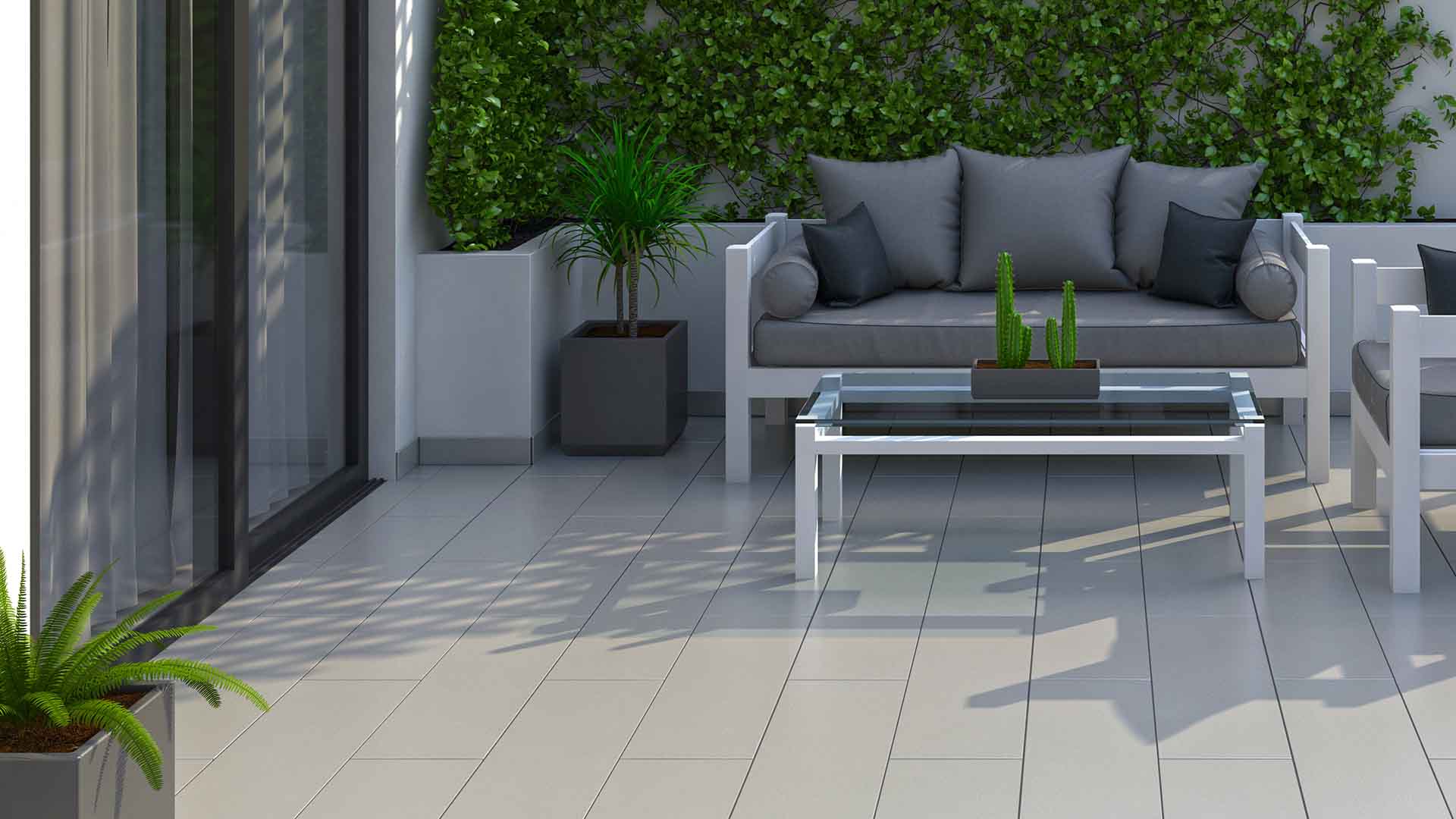
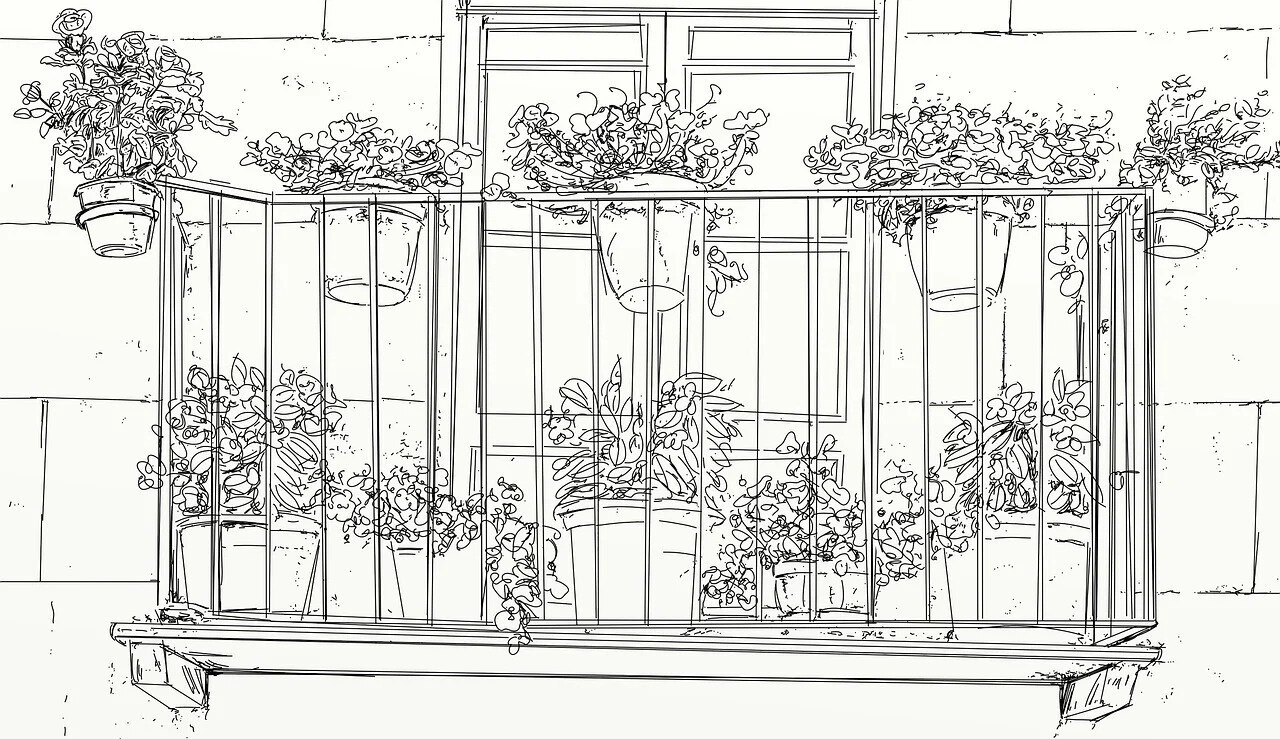





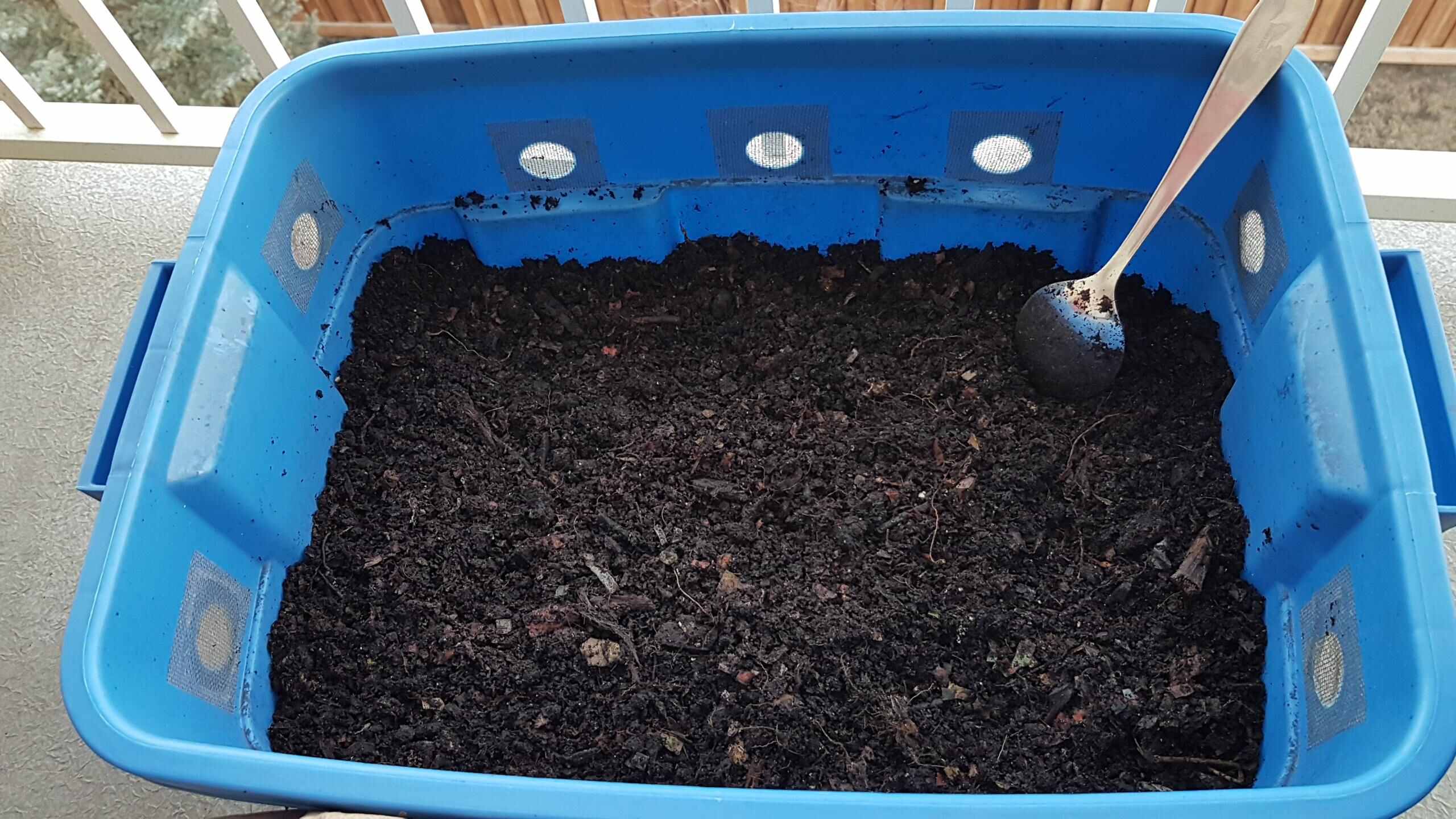


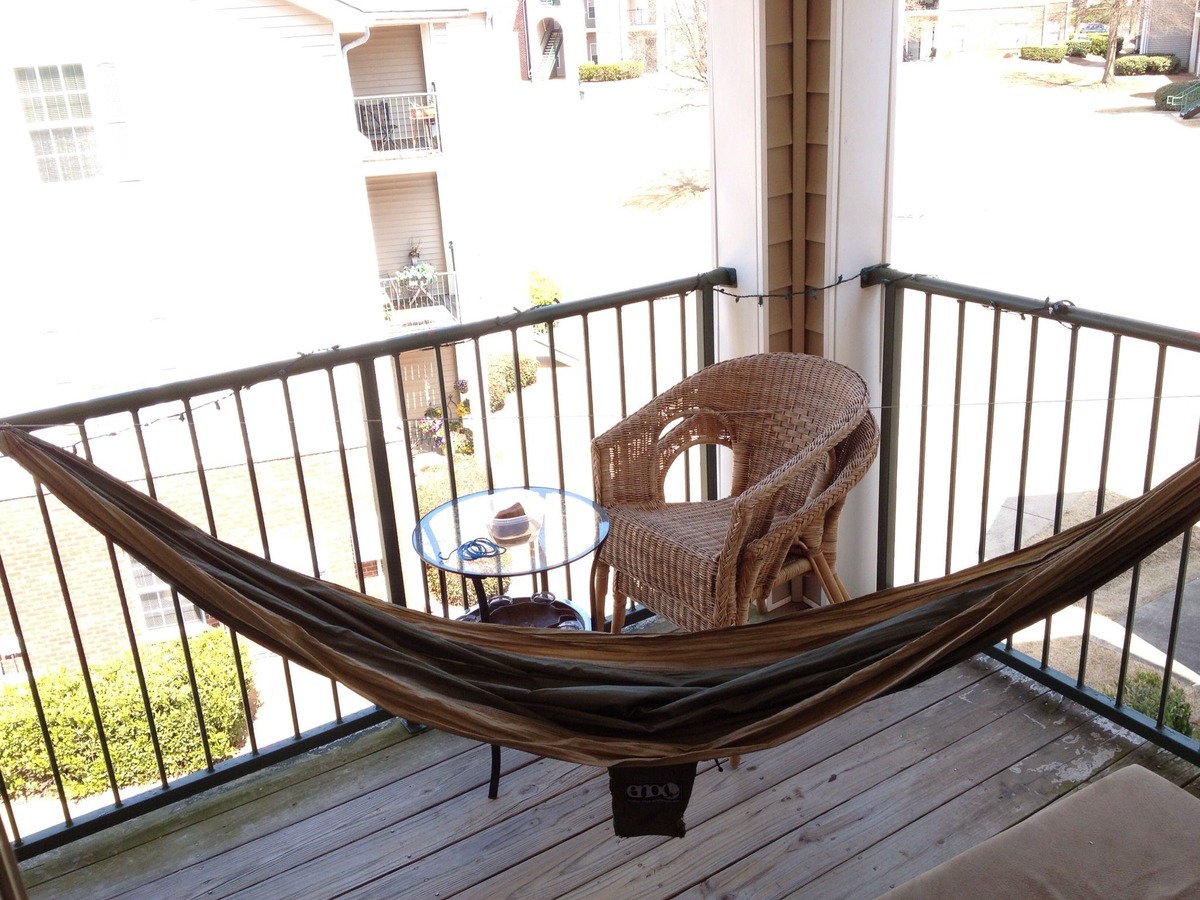
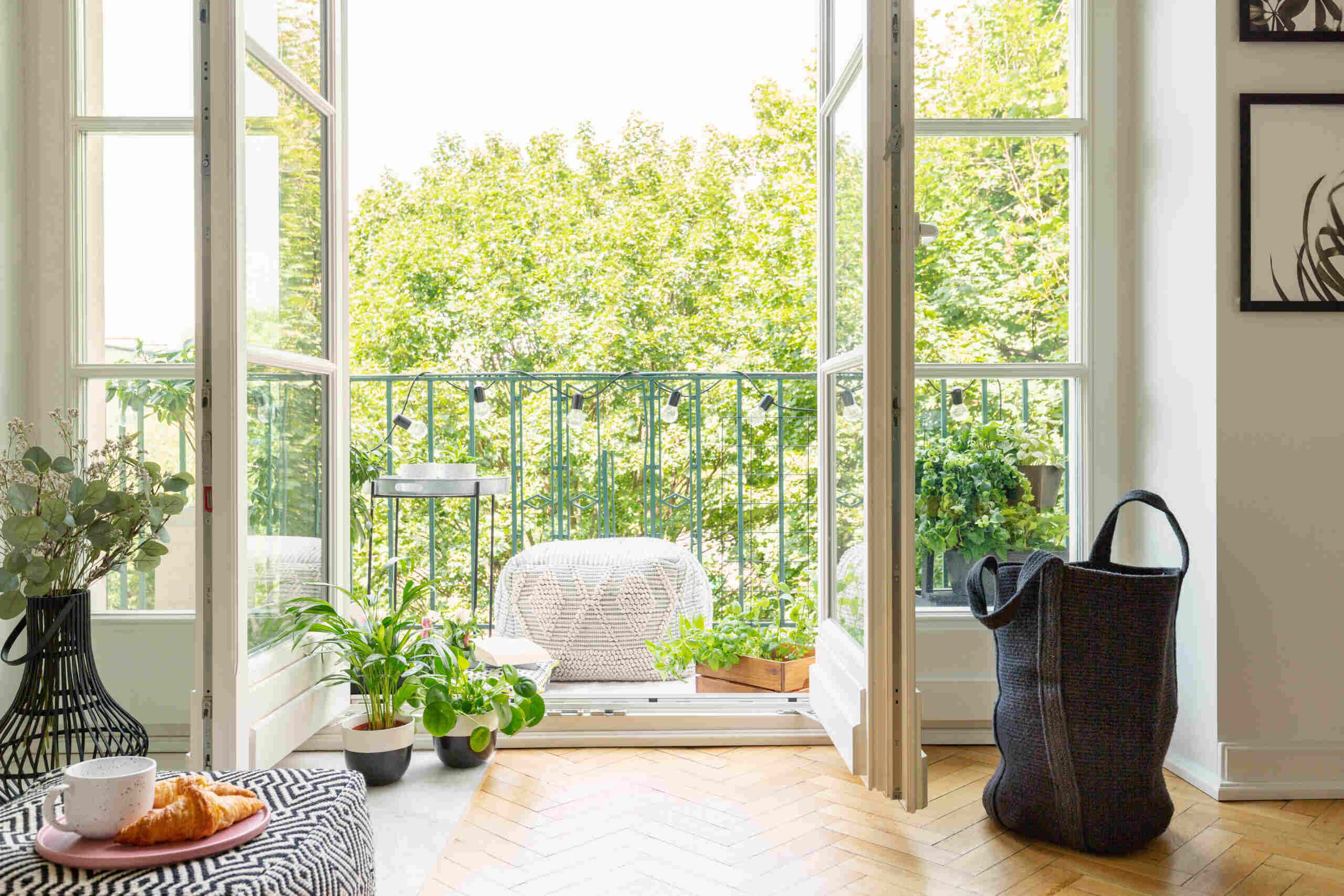
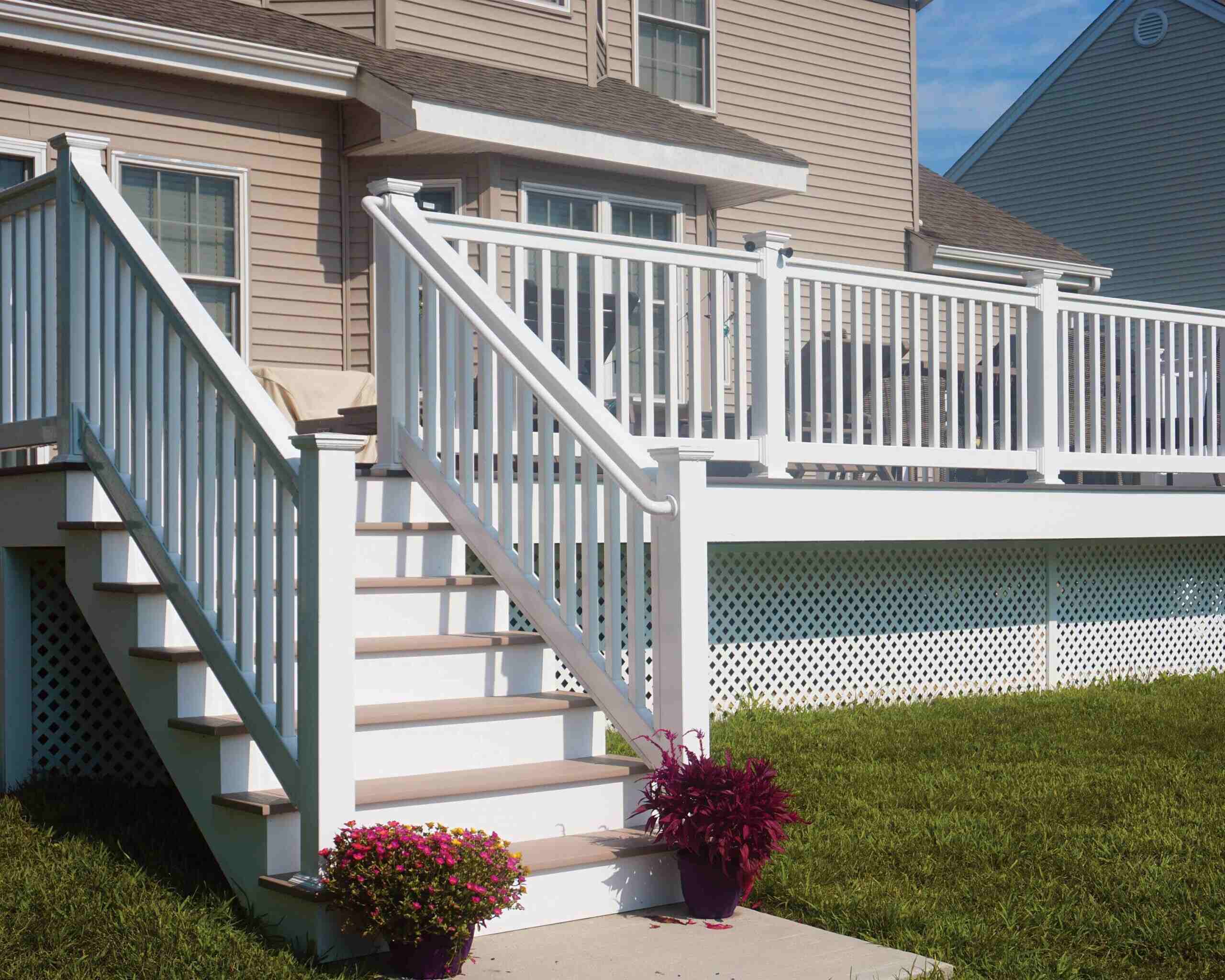

0 thoughts on “How To Have A Garden On A Balcony”